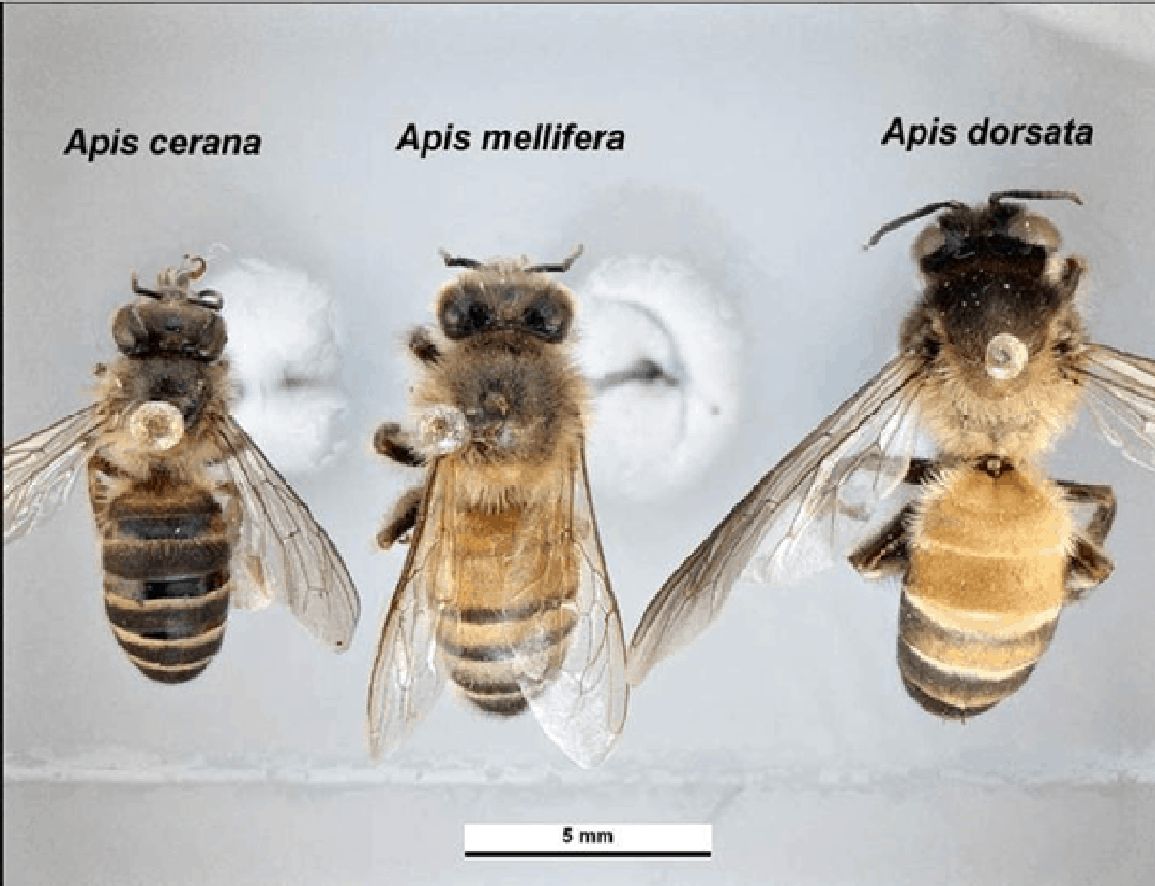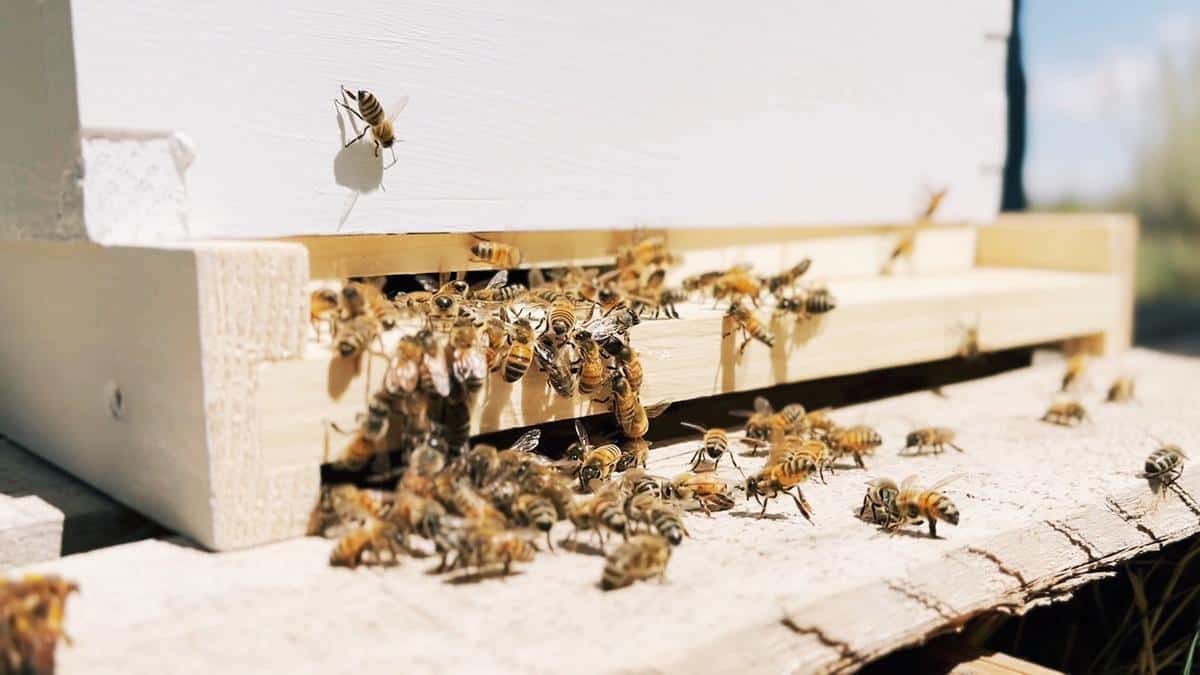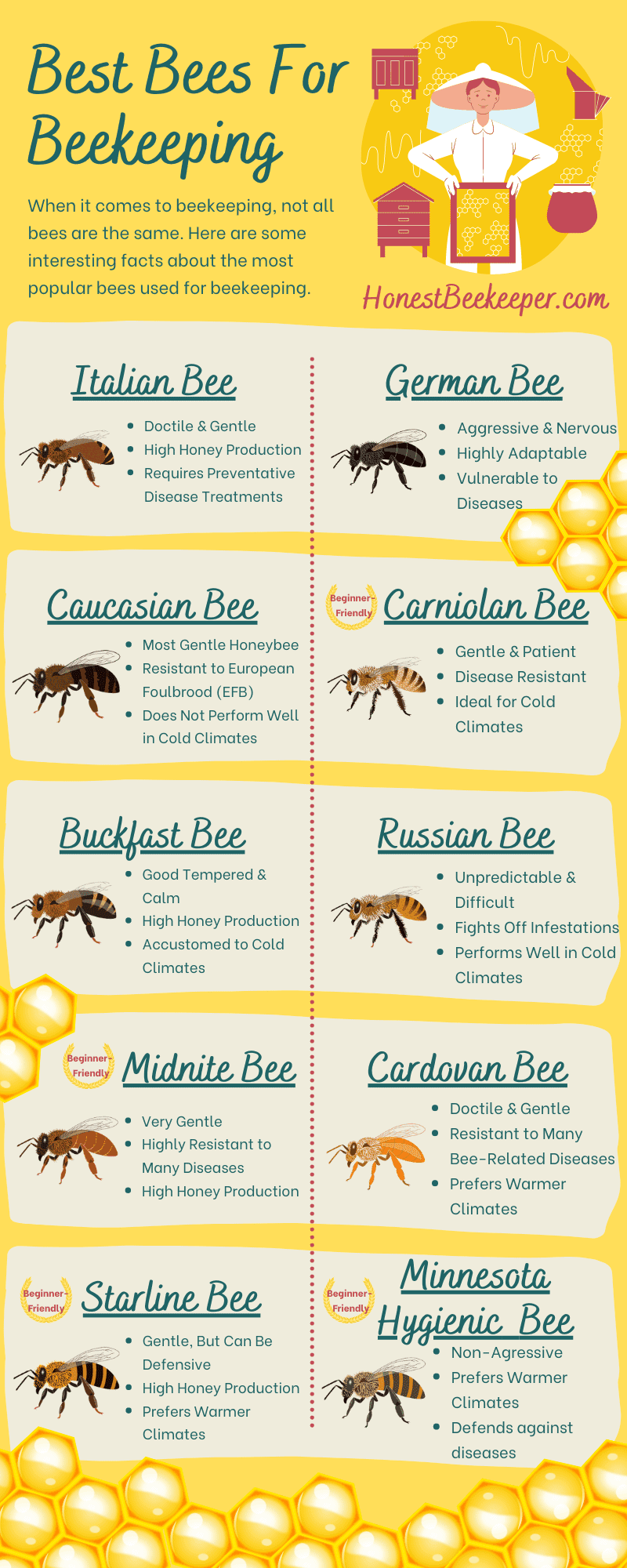Beekeeping today is facing an increasing problem of aggressive bee species. These aggressive bee species are becoming more and more common, making it more difficult for beekeepers to manage their hives. As a result, beekeepers are forced to take special precautions in order to keep their hives safe, as well as protect their bees and the environment. This article will discuss the growing problem of aggressive bee species and how beekeepers can tackle the problem in order to keep their hives safe.
Overview of Aggressive Bee Species

Africanized Honey Bees
Africanized honey bees, also known as “killer bees”, are a hybrid of the African honey bee and several European honey bee subspecies. The hybrids were first bred in Brazil in the 1950s and were known to be far more aggressive than their European counterparts. Africanized honey bees are now found in many parts of the United States and are considered a major threat to beekeepers, posing a serious threat to their colonies.
European Honey Bees
European honey bees are the most widely used bee species in beekeeping today, and can often become aggressive when their colonies are disturbed. In addition to being aggressive towards beekeepers, European honey bees are also very defensive of their hives, often attacking intruders in an attempt to protect their colonies.
Buckfast Bees
Buckfast bees are a hybrid of several European honey bee species, bred for their docile behavior and resistance to disease. Although Buckfast bees are generally less aggressive than other bee species, they can still become defensive when their hive is disturbed. Beekeepers should take extra caution when working with Buckfast bees, as they can still sting and become aggressive if provoked.
Identification of Aggressive Bee Species

Physical Characteristics
Africanized Honey Bees (also known as “killer bees”) are a hybrid of the European Honey Bee and the African Honey Bee. They are smaller in size than other honey bees, but can be identified by their yellow and black stripes that are wider than other bees.
Behavioral Characteristics
Africanized Honey Bees are more defensive of their hives and will attack in greater numbers than other honey bee species. They are also more prone to swarming than other species and have been known to travel further distances when disturbed. They are also more sensitive to vibrations and will attack any perceived threat, including humans and animals, in a much larger area than other bee species.
Prevention and Mitigation of Aggressive Bee Species

Management Practices
Good management practices are essential for successful beekeeping. These include providing ample food and water sources, and ensuring the hive is free of pests and diseases. A well-managed hive is less likely to experience aggressive behavior from its inhabitants. Regular inspections can help identify potential issues and allow for timely interventions.
Beekeeping Techniques
Certain beekeeping techniques can be employed to reduce the chances of aggressive behavior from bees. Keeping hives in well-ventilated areas can help keep bees calmer and less likely to react aggressively. Providing a wide variety of suitable forage can promote a healthier colony and reduce the likelihood of aggressive behaviour. Splitting hives can also help to prevent the buildup of aggressive tendencies, as the bees are kept apart from each other. Additionally, the use of bee-proofing materials can help to reduce aggressive tendencies.
Removing drones from hives can also help reduce the chance of aggression. Drones are male bees and can be removed from a hive and replaced with female bees. This helps reduce the chances of aggressive behaviour and can help to create a more balanced, productive hive.
Finally, the use of non-toxic pest control methods, such as the use of essential oils, can help to reduce the chances of aggressive behaviour from pests. These methods are often more effective than traditional chemical treatments and can be used safely around bees.
Beekeeper Safety
Protective Equipment
Beekeepers should always wear the proper protective gear when tending to their hives. This includes a beekeeping suit or jacket, hat, veil, and gloves. The suit should be made of fine mesh to protect the beekeeper from stings. A long-sleeved shirt and pants should also be worn underneath the gear for added protection.
Emergency Action Plan
Beekeepers should have an emergency action plan in place in case of an aggressive bee species. The plan should include steps to take if a beekeeper is stung, such as leaving the area and seeking medical attention. It should also include steps to take if an aggressive bee species is identified in the hive, such as relocating the hive and contacting a beekeeping expert.
It is important for beekeepers to be aware of the risks associated with aggressive bee species, and to take the necessary precautions to protect themselves and their hives.
Frequently Asked Questions
How can beekeepers protect their hives from aggressive bee species?
- Identify Aggressive Bee Species: The first step for beekeepers to protect their hives from aggressive bee species is to identify the species that are displaying aggressive behavior.
- Choose a Site with Reduced Risk: Beekeepers should try to choose a hive location that is away from areas that are prone to aggressive bee species.
- Use the Appropriate Hive Design: Using a hive design that includes features that can help to keep aggressive bee species away, such as a mesh-covered entrance, can help to reduce the risk of an attack.
- Monitor Beehive Activity: Beekeepers should regularly monitor their hives for signs of aggressive bee species activity.
- Use Repellents: Beekeepers can use repellents such as smoke, water sprays, and essential oils to deter aggressive bee species from their hives.
- Check for Infestations: Beekeepers should also check their hives for any signs of infestations from aggressive bee species and take necessary action to eliminate them.
What are the Potential Consequences of Aggressive Bee Species on Beekeeping?
Aggressive bee species can have a number of detrimental effects on beekeeping. These bees are more likely to attack beekeepers, causing them injury or even death. They can also sting other animals, including domestic pets, and potentially cause harm to people. Aggressive bee species are also known to fight with other bee colonies, leaving beekeepers with less honey and wax production. Furthermore, they are more likely to swarm, which can put beekeepers and the surrounding environment in danger. Finally, aggressive bee species are more likely to succumb to disease and pests, which can lead to a decrease in overall bee populations and a decrease in the quality of honey produced.
What are the Primary Causes of Aggressive Bee Species?
Aggressive bee species are caused by a combination of environmental factors and genetics. Environmental factors such as overcrowding, lack of resources, and hostile hive conditions can lead to the development of aggressive behaviors in bee colonies. Additionally, some bee species are naturally more predisposed to aggression than others, due to their genetic makeup. In some cases, the use of inbred bees or the mixing of different bee species can also lead to aggressive behavior.
What are some strategies for dealing with aggressive bee species in beekeeping?
1. Use Varroa-resistant bee species: Varroa mites are a major contributor to bee aggression. Varroa-resistant bee species, such as Carniolan and Italian honey bees, are less likely to become aggressive when infested with Varroa mites.
2. Start with a gentle bee species: Certain bee species, such as German black bees and Buckfast bees, are naturally less aggressive. If you’re just starting out, it’s best to begin with one of these more docile bee species to avoid unnecessary stress and aggression.
3. Work with bees away from the hive: When handling bees, it’s important to do so away from the hive. Aggressive bees are more likely to attack if they think their hive is being threatened.
4. Wear protective gear: Always wear protective gear when working with bees, such as a bee suit, gloves, and a veil. This will help protect you from stings and reduce the stress of the bees.
5. Use smoke: Smoke masks the alarm pheromone that bees use to signal danger. Use smoke to calm the bees and reduce aggression.
6. Move slowly and calmly: Moving quickly around bees can trigger their aggression. Keep your movements slow and calm to reduce the likelihood of an attack.
7. Check for pests: Aggressive behavior can often be attributed to pests. Regularly inspect your hives for pests and treat if necessary.
Are there any preventative measures beekeepers can take to avoid aggressive bee species?
1. Choose the right species: Most beekeepers are unaware of the fact that some bee species are more prone to aggression than others. It is important to do some research before starting a beehive and choose a species that is less likely to be aggressive.
2. Monitor the hive: Keeping a close eye on the hive helps identify early signs of aggressive behavior in bees. Beekeepers should monitor their hives regularly and take corrective measures if they observe any signs of aggression.
3. Reduce stress: Stress can lead to aggressive behavior in bees. Beekeepers can reduce stress in their hive by providing adequate nutrition and a safe environment for the bees.
4. Practice good beekeeping: Good beekeeping practices such as providing adequate ventilation in the hive, avoiding overcrowding, and ensuring proper hygiene can help prevent aggression in bees.
5. Use protective gear: Beekeepers should always wear protective gear such as a veil and gloves while handling the bees. This will help protect them from the stings of any aggressive bees.
Conclusion
Beekeeping has become increasingly challenging with the emergence of more aggressive bee species. To protect bee colonies, beekeepers must be aware of the different bee species and the potential for aggression. It is essential to use preventive methods such as avoiding overcrowding, providing appropriate food sources, and ensuring adequate ventilation. By following these guidelines, beekeepers can reduce the risks of aggressive bee species and keep their colonies healthy and productive.
